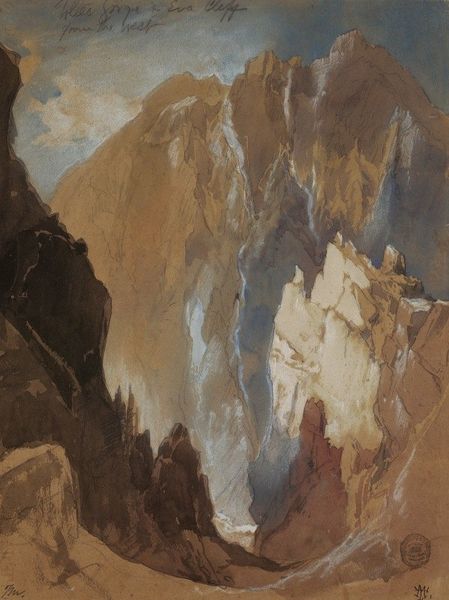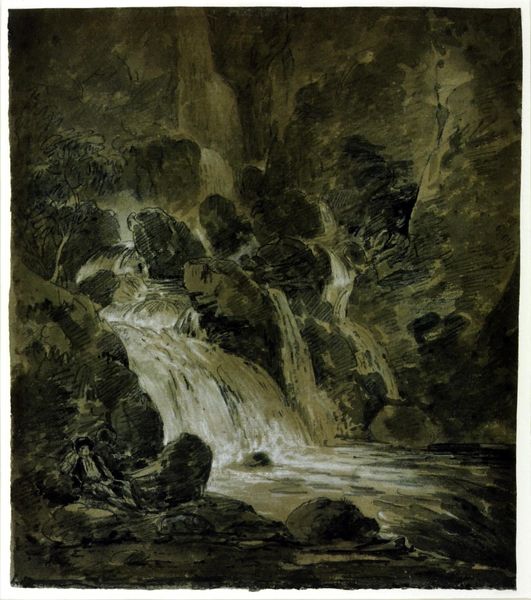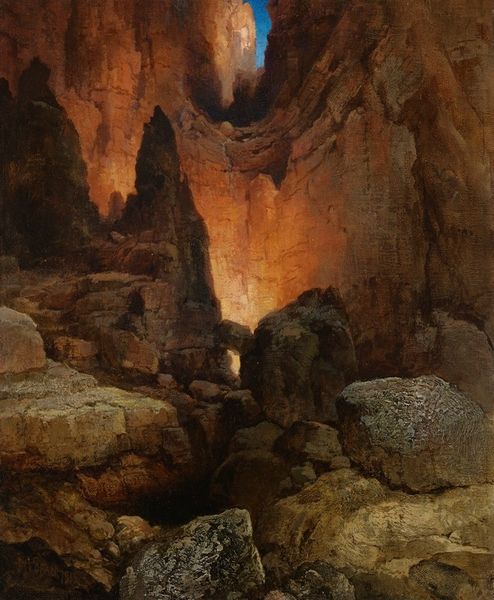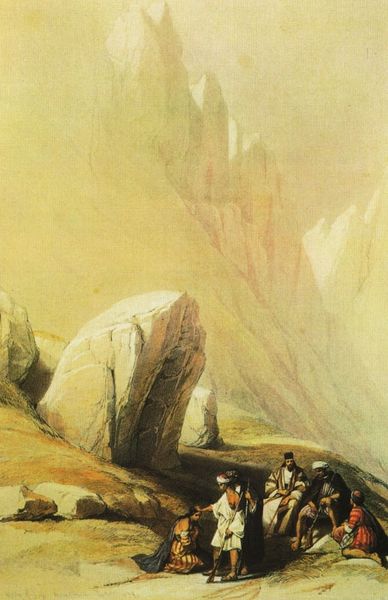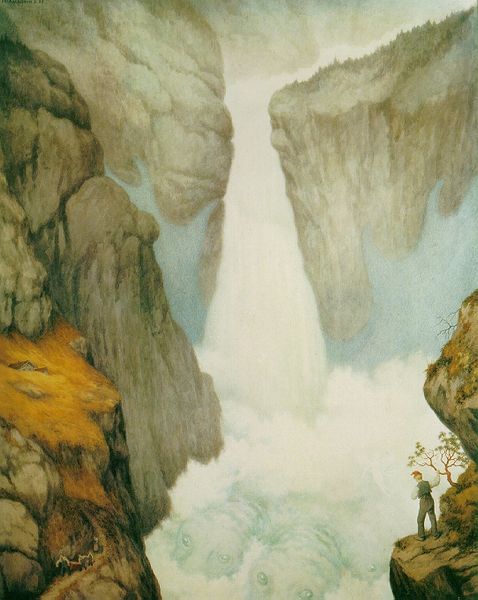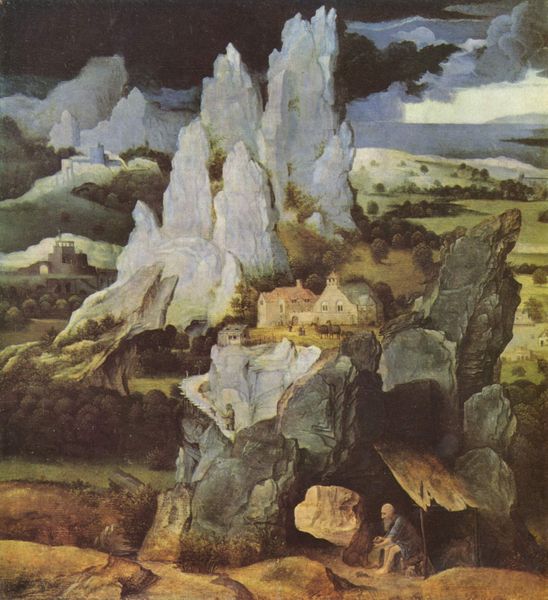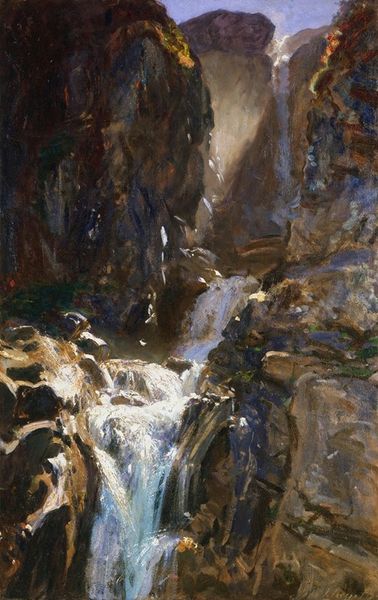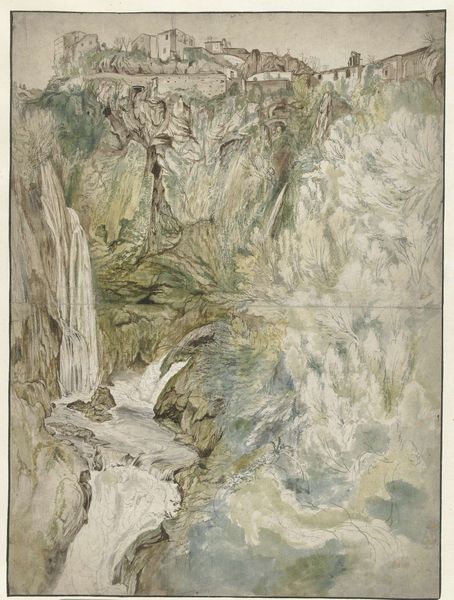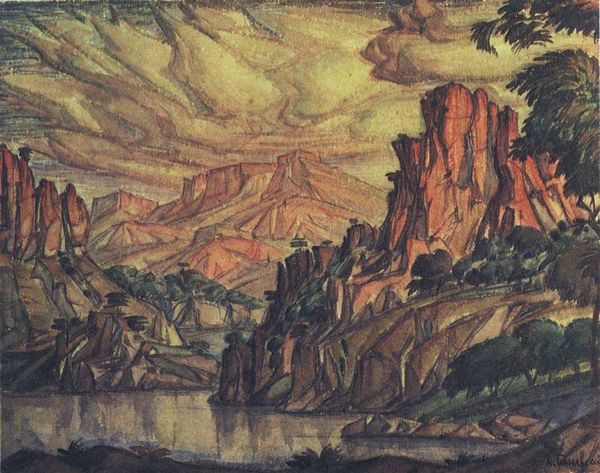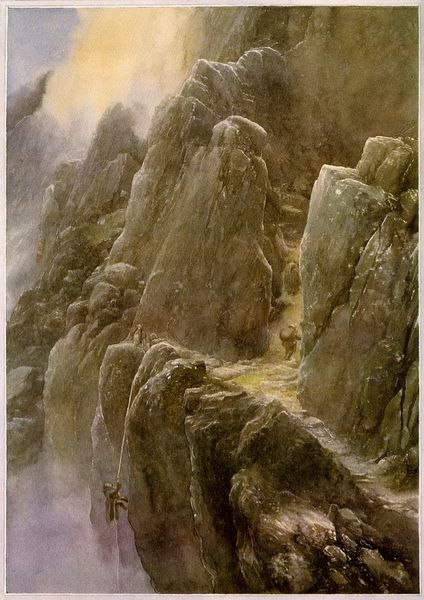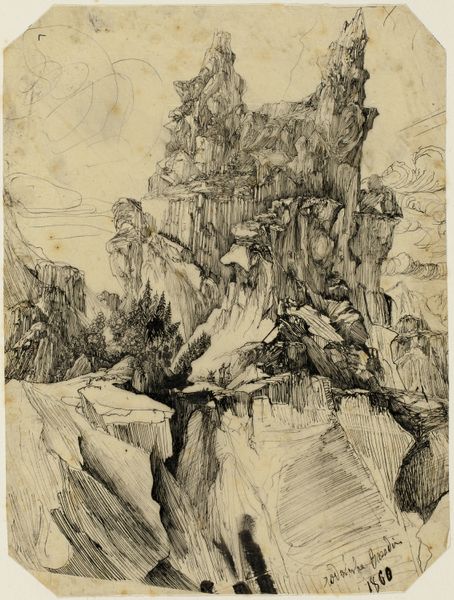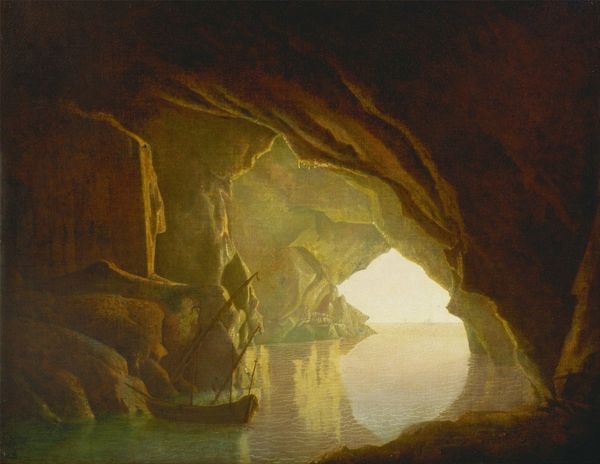
watercolor
#
landscape
#
oil painting
#
watercolor
#
rock
#
ancient-mediterranean
#
romanticism
#
orientalism
#
watercolour illustration
#
history-painting
#
watercolor
#
realism
Copyright: Public domain
Curator: Looking at "The Theater, Petra," by David Roberts, one is immediately struck by the dramatic rendering of this ancient city carved into sandstone cliffs. The architectural forms seem almost organically grown from the rock face itself. Editor: My immediate impression is the sense of scale, both its hugeness, and yet… its quietude. The light, particularly, strikes me. It seems to both highlight details and obscure depths simultaneously, contributing to an almost dreamlike state. What is it about those details you find so evocative? Curator: Well, Petra, and its architecture, represented something powerful to Orientalists like Roberts, its forms functioned as a conduit to connect to lost civilizations. Here, he’s capturing more than just topography; he's invoking cultural memory. Editor: I see what you mean. Semiotically speaking, even without knowing the history, one senses the weight of human presence layered onto the natural world. Notice the strong verticals, and how they meet strong horizontal compositions on each plateau. It produces a sort of classical framing, very deliberate, almost staging of history. Curator: Indeed. Petra, hidden within this almost impenetrable landscape, carries with it the echo of power dynamics of trade and civilization, also revealing the transience of earthly empires. Editor: That inherent dichotomy, that is definitely part of Romanticism too, right? Because isn’t Romanticism all about how ephemeral all our creations can be? This medium, this watercolour, too—the liquidity itself implies… transformation. Curator: Roberts certainly imbued it with that sense of romantic yearning. And there's that dance between what’s revealed and concealed which amplifies its mystique. He wasn’t merely interested in replication, but in evoking emotion. Editor: Which he certainly does. Looking again at the disposition of the light, I find it's quite cleverly deployed; not merely to show what's there but to suggest what is hidden, unseen. I'm glad to consider, now, how that very tension infuses our understanding, too. Curator: Absolutely, there's so much layered in this piece. The play of light, architecture, and history speaks to our enduring human search for meaning and connection. Editor: A rewarding exercise indeed, contemplating how the brushstrokes reveal layers of history through light, composition, and careful selection.
Comments
No comments
Be the first to comment and join the conversation on the ultimate creative platform.
